ORGANIC MATTER AS A SOURCE FOR OBTAINING FUEL ADDITIVES
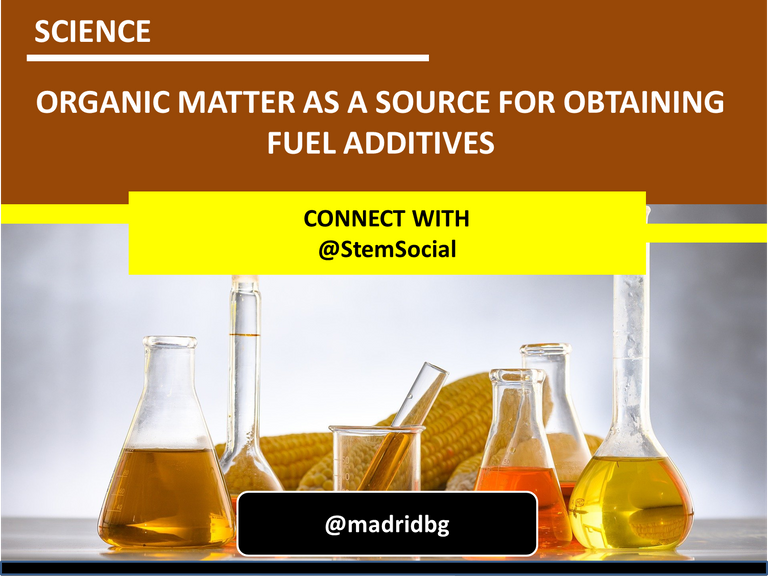
Author: @madridbg, via Power Point 2010, using public domain images. Chokniti Khongchum
Greetings and welcome dear users of this prestigious platform, especially to all those who make daily life in the communities of @StemSocial, communities where the scientific approach is promoted within the #Hive platform.
The purpose of the material we will share below is to address the use of organic resources or wastes so that they can be used in a new circular economy, specifically associated with obtaining new fuels to improve the environmental conditions caused by the unscrupulous burning of hydrocarbons from oil and its derivatives.
INITIAL APPROACH

Human development has been one of the processes that has had the greatest impact on our environment, since overconsumption and unscrupulous use of natural resources have had negative effects on the balance of our planet.
In this sense, waste, whether of organic or inorganic origin, has become one of the main environmental problems or inconveniences, a problem that has been increasing with the economic, social and technological development of mankind.
These scenarios are accelerated in underdeveloped countries, where there is no adequate treatment of the waste generated by society itself and, consequently, landfills are generated that eventually end up causing soil degradation, visual pollution and excessive air pollution, since excessive burning of these wastes occurs through them.
Consequently, at the university level and specifically at the laboratory level, alternatives are being sought that allow the transformation of organic matter in a new gearing process that allows these wastes to receive a new utility for the benefit of our environment.
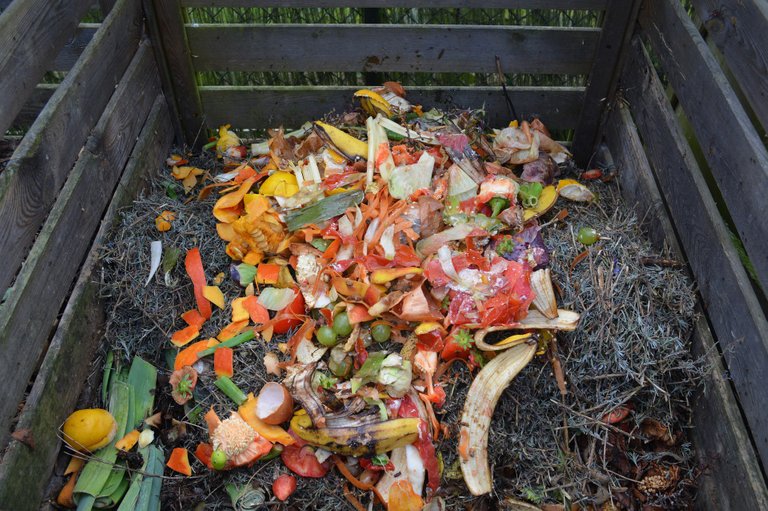
Author: Ben Kerckx
So, based on the above, we will use as a basis research such as that developed by López and collaborators, where potato peels are used as raw material to obtain additives that will be used in the production of new generation fuels, which are more efficient and at the same time we are offering a new possibility to the planet to stabilize and balance its natural systems.
GENERAL INFORMATION ON BIOFUELS

When talking about biofuels, we must know that they are products obtained from biomass obtained from organic matter, in which a large part of the carbon dioxide produced through a combustion process is recovered in the photosynthetic process developed by plants.
Thus, this type of material emerges as a valid alternative to face the environmental problems and the overexploitation of non-renewable resources such as oil and natural gas.
Although biofuels are classified according to their state and the raw material used to obtain them, in this work we will focus exclusively on the extraction of butanol as an additive to traditional fuels, which is obtained fundamentally from organic matter rich in carbohydrates, which have been subjected to a hydrolysis process that allows obtaining a rich mixture of alcohol and corresponding water.
This is due to the decomposition of starch and cellulose present in the organic matter, which through a fermentation process, allows the transformation of these complex carbohydrates into much simpler carbohydrates, where we will obtain butanol with manufacturing utility.
In this sense, the process of using biofuels allows for a reduction in polluting gas emissions and, consequently, a reduction in the greenhouse effect at the atmospheric level, all as a consequence of the reduction of sulfur dioxide released into the air, since organic fuels do not allow the production of this type of material.
Thus, a gradual use of fuels from organic matter would reduce the effects of acid rain, reduce the concentration of aromatic compounds and heavy metals in the air and consequently, the presence of volatile gases will also be reduced, thus presenting clear advantages compared to the process of obtaining fuel from fossil resources.
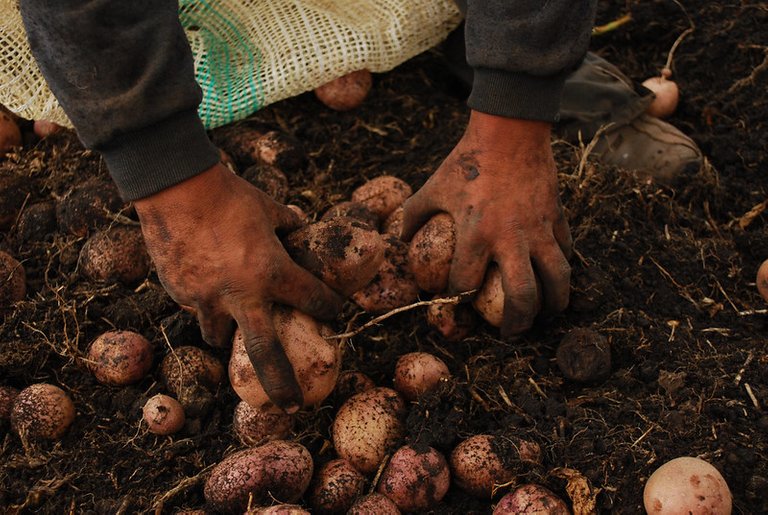
Author: Santiago La Rotta
Likewise, the production of this type of material allows for a balance at the socioeconomic level, since it would represent a new alternative for those agricultural sectors that do not have sufficient technology or industrialization to deal with the transformation of their waste materials or products.
In general terms, the advantages of obtaining these fuels are clear, the only problem that is evident is that we have not dedicated the time and attention to their mass production.
BUTANOL AS A FUEL ADDITIVE

As it is well known, the fuel obtained from fossil resources is a mixture of solvent that allows maintaining a combustion degree from a ignition point and a fuel, so that in order to improve the efficiency of this energy system, some of the additives present in the mixture have been replaced, being butanol one of the best alternatives to improve the process and more when it is extracted from the organic matter of the potato waste obtained in production farms.
In order to explain the butanol extraction procedure, we will rely on a series of studies that have been developed by the National University of Colombia, specifically from its Faculty of Science.

Author: flickr
The researchers of this research center start from the fact that butanol has a clear advantage over its predecessor, ethanol, and this is assumed by the combination capacity with gasoline that the former has over the latter, a capacity that represents up to 85%, which means that it does not require any mechanical modification at the level of diesel or gasoline engines known to date.
Likewise, the mass production of butanol through the standardization of this experimental process allows the use of the solvent that can be applied in the production of paints, natural resins, varnishes, vegetable oils, dyes, among others.
Therefore, it is a process that presents a diverse utility and at the same time an alternative for our planet as far as the treatment of organic waste is concerned, based on the fact that a nation produces approximately 130 thousand hectares of potatoes, which represents an approximate figure of 2.5 million tons per year.
However, if we extrapolate this figure to the waste generated, we can have a broad vision of the large amount of pollutants that we are introducing into our system and that if they are not treated, we would be failing to take advantage of them.
Consequently, the production of butanol according to the guidelines of the Faculty of Sciences of the Universidad Nacional de Colombia, is based on several phases, among which we can highlight.
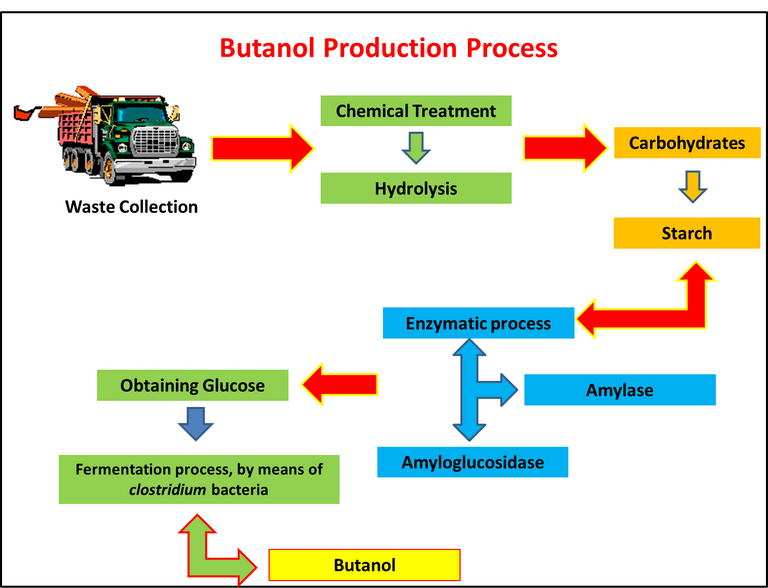
Author: @madridbg, via Power Point 2010.
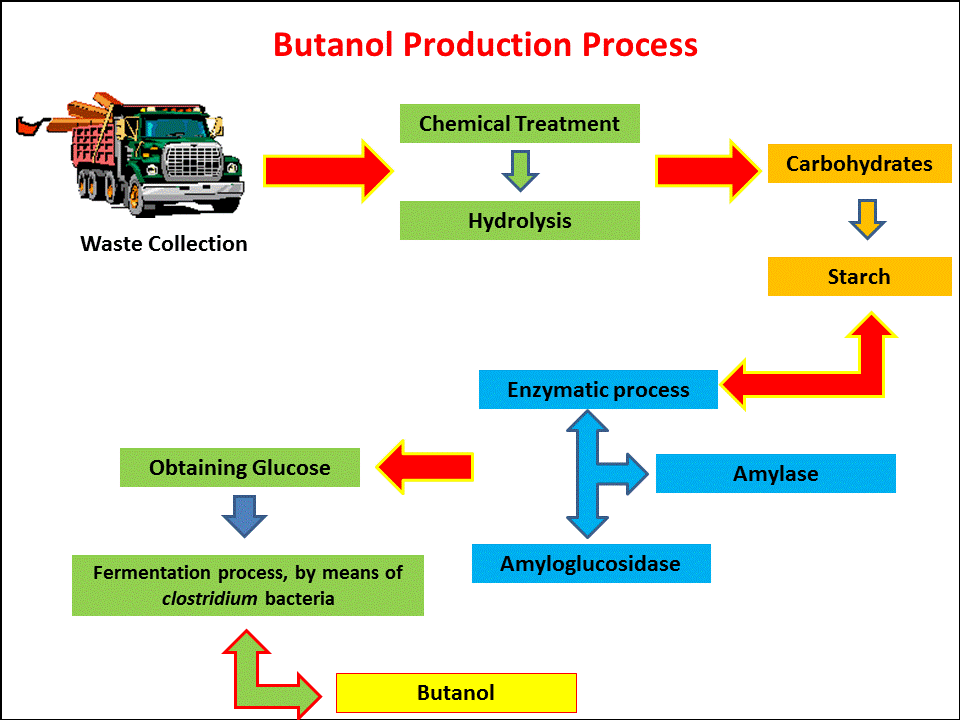
Author: @madridbg, via Power Point 2010.
1. Collect potato residues.
2. These residues are subjected to chemical treatments, specifically hydrolysis, which through hot water can extract carbohydrates such as potato starch, since it will be this substance that will give rise to sugars or larger carbohydrates that will serve as raw material for obtaining butanol. Finally, it is subjected to a biochemical process in the presence of enzymes such as amylase and amyloglucosidase, which have a specific function and which is to break the structure of simple carbohydrates and generate the respective glucose.
3. Finally, there is the fermentation process through microorganisms or clostridium type bacteria, which will be responsible for transforming the organic matter obtained into the respective butanol to be used as an additive.
FINAL APPROACH

Undoubtedly, at the scientific and experimental level, we must look for substantial alternatives that allow us to transform organic matter or the different wastes produced in society, in order to obtain resources that allow us to give a valid use to these wastes.
In this sense, the research being carried out opens the door to the search for new energy alternatives that will allow us to continue advancing in principles associated with sustainability and the planetary balance that we need so much.
BIBLIOGRAPHY CONSULTED

[1] McMURRY E., John y Fay C., Robert. (2008). General Chemistry. Fifth edition PEARSON EDUCACIÓN, Mexico., 2009 ISBN: 978-970-26 1286-5.
[2] Ralph, H. Petrucci, William S. Harwood, E. Geoffrey Herring. (2003). GENERAL CHEMISTRY. Eighth edition. PEARSON EDUCACIÓN. S.A., Madrid.
[1] López y Col. Use of potato peel generated in the UANL Biological Sciences cafeteria for the production of flour rich in antioxidants.Artículo: Acceso Online
OF INTERES

1. The cover image was made by @madridbg, used public domain image.
2. For more information related to the areas of science, technology, engineering and mathematics, feel free to visit #stemsocial and #stem-espanol, communities that promote scientific advances in these areas.
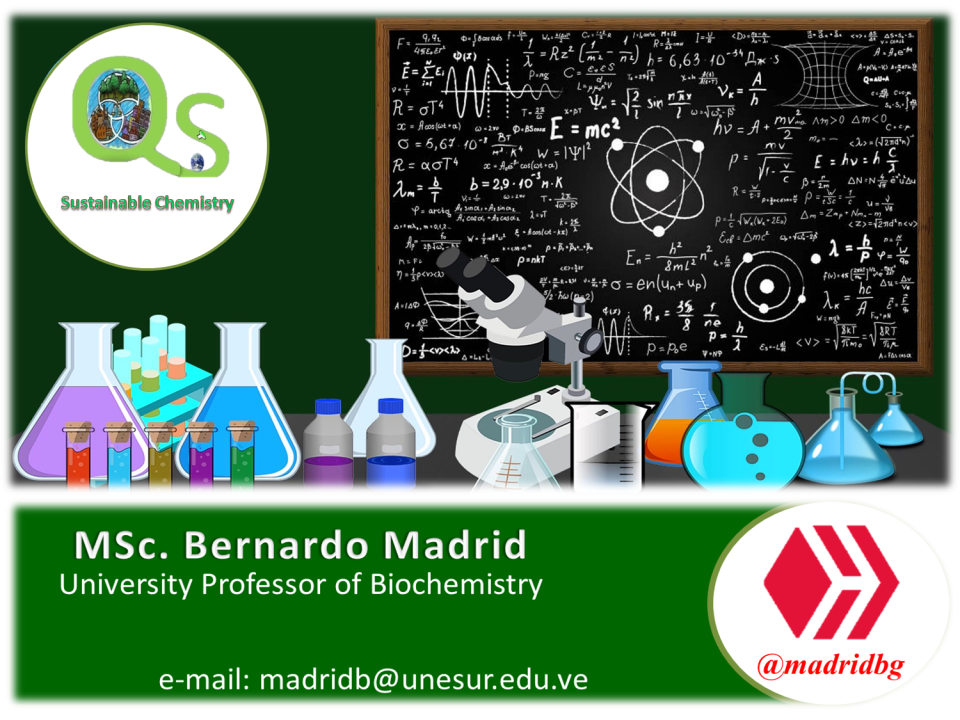
0
0
0.000
https://twitter.com/BGMadrid/status/1572082917962039298
The rewards earned on this comment will go directly to the people( @madridbg ) sharing the post on Twitter as long as they are registered with @poshtoken. Sign up at https://hiveposh.com.
I remembered seeing a friend of mine working on Biofuel as her project topic in the University. She worked on plantain peels, and I was very active in helping her pick plantain peels around the community, from one waste bin to another.
Greetings friend, no doubt the university spaces is essentially the place where we actually do science and what better to implement this knowledge in tangible and useful approaches to our society.
Personally, I have worked with cocoa shells, orange, used oils to give them a new utility and the waste collection stage, I consider it is the most complicated because from this stage begins the sequence of analysis.
Thanks for your contribution to the STEMsocial community. Feel free to join us on discord to get to know the rest of us!
Please consider delegating to the @stemsocial account (85% of the curation rewards are returned).
You may also include @stemsocial as a beneficiary of the rewards of this post to get a stronger support.
Thank you for your support and appreciation of my publications.
I have just missed this blog. However, thanks to the STEMsocial distilled, I found out about it. Pffeewww... I would have been sad to have missed it (although technically, I would have never known).
The topic is quite interesting, and we definitely need more initiative like that one to re-use our waste for second-life purposes. Bio-fuel is more and more popular, especially those days where the price of standard energy sources sky-rockets.
Cheers, and thanks for sharing this information with us on STEMsocial!
Greetings friend @lemouth first of all thank you for your valuable words and for taking the time to read my writing.
With respect to the subject, we are certainly at a point where science must put all its arsenal to implement coherent process that does not allow progress towards a truly sustainable and what better way to start than giving a second chance to our waste, so that we can develop a circular economy space consistent with the reality of each society.
Methodologies such as these, we should certainly replicate them from the university training spaces so that it can generate a great impact, starting from the local level.
I definitely agree!
Cheers!